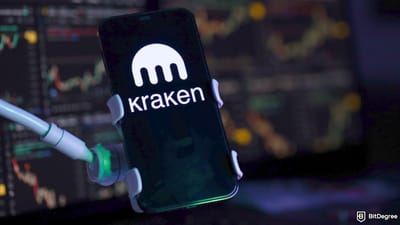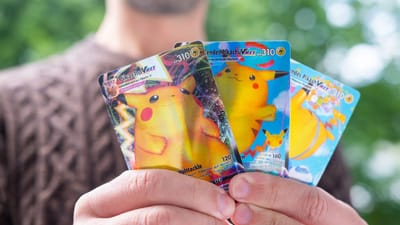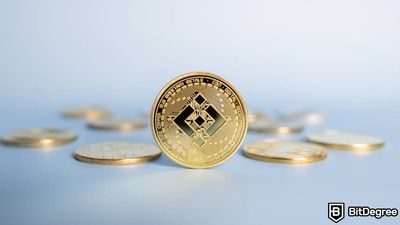Key Takeaways
- Real-world assets in crypto offer a new way to invest in tangible assets like real estate, art, and commodities;
- Tokenization opens up opportunities for fractional ownership, increased liquidity, and broader investor participation;
- Challenges such as market volatility and regulatory clarity need to be addressed for the industry to mature.
Stop overpaying - start transferring money with Ogvio. Join the waitlist & grab early Rewards NOW! 🎁
Real-world asset crypto projects are changing the game. You've probably known about stocks, bonds, and real estate. They’re the classic investments, right? But let's face it, getting a piece of those big-ticket items can feel like chasing a unicorn.
That's where tokenized assets come in. It lets you own a piece of a building or art without needing a ton of cash. It's like dividing up these things into tiny shares that anyone can buy.
Platforms like Binance, Bybit, and Kraken are recognizing the potential of this emerging market. By offering these projects, they are expanding their ecosystem and opening up new options for people to build their portfolios.

Did you know?
Subscribe - We publish new crypto explainer videos every week!
What is Crypto Arbitrage? (Risks & Tips Explained With Animation)
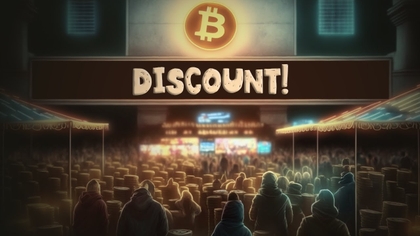

Table of Contents
- 1. What are Real-World Assets in Crypto?
- 2. Top Real-World Asset Crypto Projects
- 2.1. Avalanche (AVAX)
- 2.2. Ondo Finance (ONDO)
- 2.3. Ethena (ENA)
- 2.4. Mantra (OM)
- 2.5. Pendle (PENDLE)
- 2.6. Maple (MPL)
- 2.7. OriginTrail (TRAC)
- 2.8. Polymesh (POLYX)
- 3. Benefits of Real-World Assets in Crypto
- 3.1. For Investors
- 3.2. For Asset Owners
- 3.3. For the Financial System
- 4. Challenges and Considerations
- 4.1. Regulatory Uncertainty and Compliance
- 4.2. Market Volatility and Liquidity
- 4.3. Proving Token Legitimacy
- 5. The Potential Future of Real-World Crypto Assets
- 6. Conclusion
What are Real-World Assets in Crypto?
Owning a piece of a famous painting or a fraction of a commercial property used to be a far-off dream, but not anymore. Real-world asset crypto projects are making this a reality and eliminating the need for physical ownership.
Latest Deal Active Right Now:Real-world assets crypto projects represent tangible assets like real estate, art, commodities, or even stocks and bonds as digital tokens on a blockchain.
The magic happens through a process called tokenization. This is where real-world items are converted into digital tokens on a blockchain. Think of it as creating a digital passport for your favorite painting or that prime commercial property.
Smart contracts are the brains behind the operation. These self-executing programs automate the process, ensuring everything runs smoothly and transparently. They define ownership, trading rules, and other essential details, all written into code.
By cutting out the middlemen and automating the process, tokenization and smart contracts make owning a piece of something big more accessible and efficient.

To facilitate this digital transformation, different blockchains have developed their own standards for creating tokens[1]. Ethereum, for example, introduced ERC-20 tokens.
These standards act as blueprints for ensuring that different digital assets can interact smoothly within the Ethereum ecosystem. This interoperability is crucial for real-world asset tokens, as it allows them to be traded and managed efficiently.
So, there you have it – a simple breakdown of how real-world assets are getting a digital makeover (you can learn more about it in this article). Now, let's take a look at the top real-world asset crypto projects.
Top Real-World Asset Crypto Projects
While the scene constantly evolves, several platforms have emerged as pioneers in tokenizing various assets. These innovative real-world asset crypto projects are pushing the boundaries of what's possible with blockchain technology. To truly grasp their potential, let's explore each one in the top real-world assets crypto list below.
However, it's important to note that investing in cryptocurrencies and tokenized assets carries risks. So, always do your own research (DYOR) and consider consulting a financial advisor before making investment decisions.
Avalanche (AVAX)
Market Cap (as of October 2024): Around $10.78 billion.
Where to Buy: AVAX is available on Binance, Bybit, Kraken, Coinbase, and more.
Avalanche is gaining traction as a platform for tokenizing real-world assets. Its high transaction speed and scalability make it an attractive option for projects looking to create and manage tokenized assets efficiently.

Unlike other blockchains that often struggle with transaction speed and capacity, Avalanche has an advanced system to handle a ton of transactions without breaking a sweat.
Avalanche uses three different blockchains working together: the X-Chain for buying and selling, the C-Chain for smart contracts (like Ethereum), and the P-Chain for managing the whole network. It's like having multiple lanes on a highway instead of just one.
Avalanche’s unique architecture allows for efficient handling of different types of transactions and enhances the network's overall performance. With this, fractional ownership of real-world assets could be implemented more efficiently on the platform.
To keep the network running smoothly, Avalanche uses a system called Proof-of-Stake (PoS). This is a more energy-efficient method than the traditional Proof-of-Work (PoW). In PoS, token holders can validate transactions and rewards.
Ondo Finance (ONDO)
Market Cap (as of October 2024): Around $959.72 million.
Where to Buy: ONDO is available to trade on decentralized exchanges.
Ondo Finance stands as a pioneer in the realm of tokenized real-world assets. Their flagship product, OUSG, has opened doors for everyday investors to get a piece of the US Treasury market. By turning these usually exclusive investments into tradable tokens, Ondo has broken down barriers and made finance a bit more accessible.
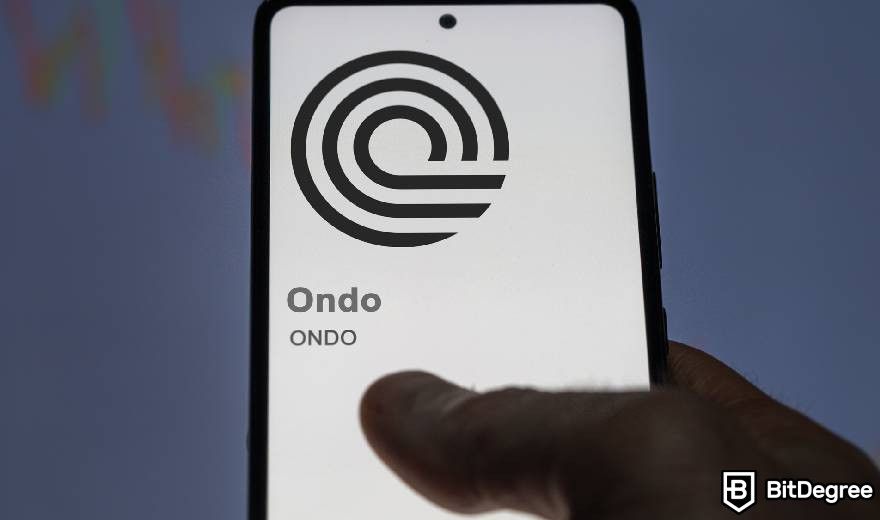
However, Ondo isn’t just about tokenizing assets; they’re building a whole financial ecosystem around it. Their lending platform, Flux Finance, lets people use their tokenized Treasuries as collateral for loans.
It’s like using your house as collateral for a mortgage, but with digital assets. Pretty cool, right? That's why it could never be left out of this best real-world assets crypto list.
Ondo is also looking beyond Treasuries. They’re diving into the world of securities tokenization with Ondo Global Markets. Think of it as building a bridge between the traditional stock market and the blockchain world. This could be a game-changer for how we invest in stocks and bonds.
Also, let's not forget about the ONDO token, which is like a VIP pass for the Ondo community. As a governance token, it grants holders a voice in the platform's direction, fostering a strong sense of community involvement.
Ethena (ENA)
Market Cap (as of October 2024): Around $783.62 million.
Where to Buy: ENA is available on Binance, Bybit, Kraken, Coinbase, and more.
Ethena is considered by many as one of the top real-world asset crypto projects, offering a fresh take on stablecoins. Instead of relying solely on overcollateralized assets, they've built a platform backed by a diversified portfolio of real-world assets. This approach mitigates the risk and helps keep the value of Ethena steady.

Ethena strikes a balance between decentralization and stability. By operating on a decentralized protocol, they ensure transparency and foster community participation. At the same time, Ethena maintains strict controls over its collateralized assets to uphold the stablecoin's value.
Another thing that sets Ethena apart is its integration into the DeFi world. You can use your Ethena tokens for more than just buying stuff. You can lend them out, borrow against them, or even help provide liquidity on other platforms.
Mantra (OM)
Market Cap (as of October 2024): Around $1.22 billion.
Where to Buy: OM is available on Binance, KuCoin, and more.
Mantra is a blockchain platform focused on tokenizing real-world assets, particularly within the Middle East and Asia.
They've got a big vision: opening up investment opportunities for everyone, not just the big players. Backed by a hefty $11 million investment, they're building a blockchain platform specifically designed for tokenizing real-world assets.
.jpg)
The clever thing about Mantra is that they're building their own blockchain from scratch – a Layer-1 platform designed specifically for RWAs. This gives them complete control over how things work and makes it easier for developers to build on their platform.
To make things even more interesting, Mantra has its own cryptocurrency called OM. It's not just for buying and selling; it also gives holders a say in how the platform runs. Plus, there are rewards for holding OM, like staking and earning interest.
Mantra isn't stopping at just tokenizing assets, though. They envision a broader financial ecosystem where tokenized assets can serve as collateral for loans or generate interest income. That's the kind of stuff Mantra is working on.
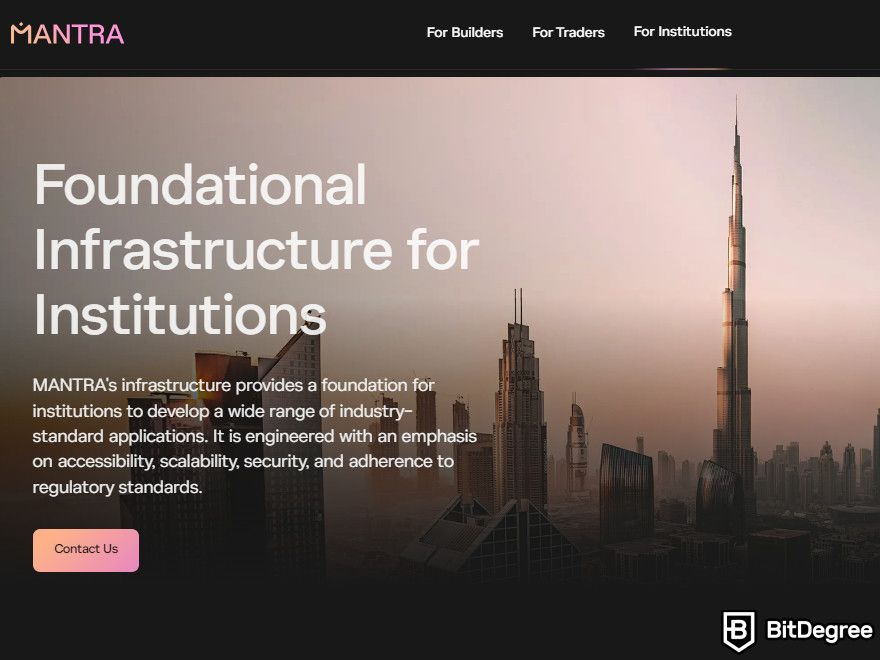
Focusing on emerging markets is also a smart move. Mantra could play a huge role in boosting local economies by helping people in these regions turn their assets into tradable tokens. It's a win-win situation for everyone involved.
Of course, building a new blockchain and navigating the world of finance isn't all sunshine and rainbows. Figuring out the rules and regulations is a big challenge.
However, as one of the top real-world assets crypto projects, Mantra seems to be up for the task. They're working hard to create a platform that complies with local laws while offering blockchain technology's benefits.

Did you know?
Subscribe - We publish new crypto explainer videos every week!
Hot VS Cold Wallet: Which One Do YOU Need? (Animated)


Pendle (PENDLE)
Market Cap (as of October 2024): Around $638.49 million.
Where to Buy: PENDLE is available on Binance, Kraken, Coinbase, and more.
Pendle is one of the top real-world assets crypto projects that offers a fresh approach to yield farming.
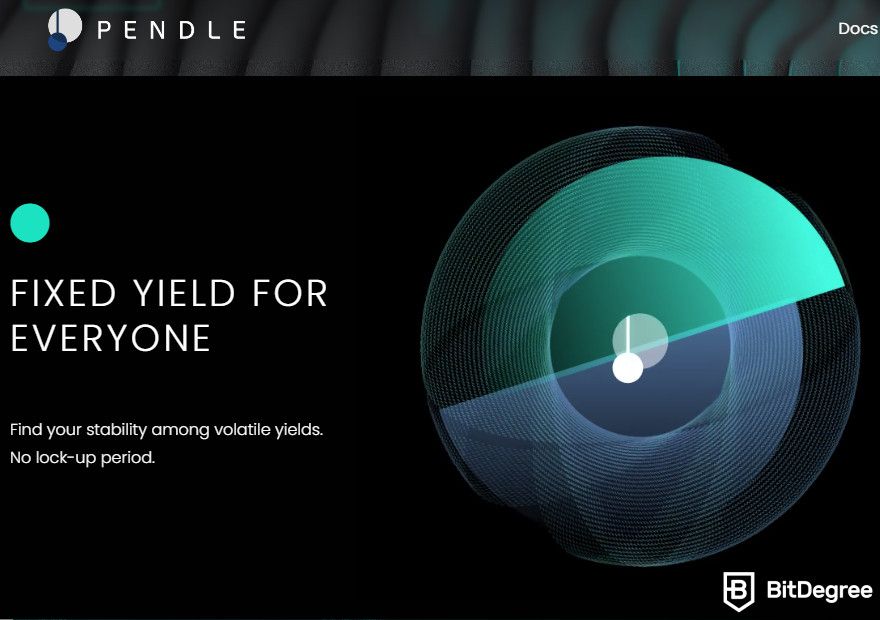
By splitting yield-bearing assets into two separate tokens – Principal Tokens (PTs) and Yield Tokens (YTs), Pendle offers investors unparalleled flexibility.
What's even more remarkable is Pendle's recent move into real-world assets. By offering yield-bearing products backed by RWAs, they're bridging the gap between traditional finance and DeFi. This means you can earn a yield on assets like stablecoins while still being exposed to the real-world economy.
Pendle's user-friendly platform and clear documentation make it a standout in the DeFi space. They've managed to attract both everyday investors and big-time players and prove their versatility.
Maple (MPL)
Market Cap (as of October 2024): Around $74.25 million.
Where to Buy: MPL is available on Coinbase, Kraken, and more.
Maple Finance has figured out how to turn loans into digital assets to open the doors for a wider crowd of investors to get involved. Instead of the usual lending process, Maple uses blockchain to make things smoother, cheaper, and more transparent.
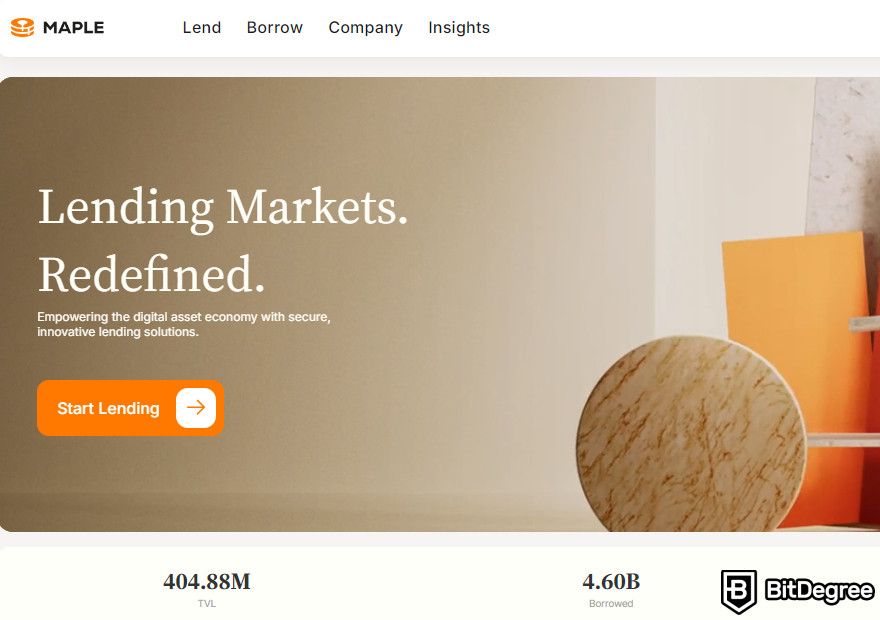
Maple's got something for everyone. They've created lending pools tailored to different types of investors, from big-money funds to individual savers. Their Maple Cash Management is a cool product that gives investors a steady income stream. It's like having a reliable money-making machine.
To keep things secure and transparent, Maple has teamed up with some of the biggest names in crypto, like Coinbase Prime. This partnership gives investors extra peace of mind, knowing their money is in good hands.
OriginTrail (TRAC)
Market Cap (as of October 2024): Around $196.56 million.
Where to Buy: TRAC is available on Bybit, Kraken, Coinbase, KuCoin, and more.
OriginTrail is a significant project that couldn’t be left out of this real-world assets crypto list.
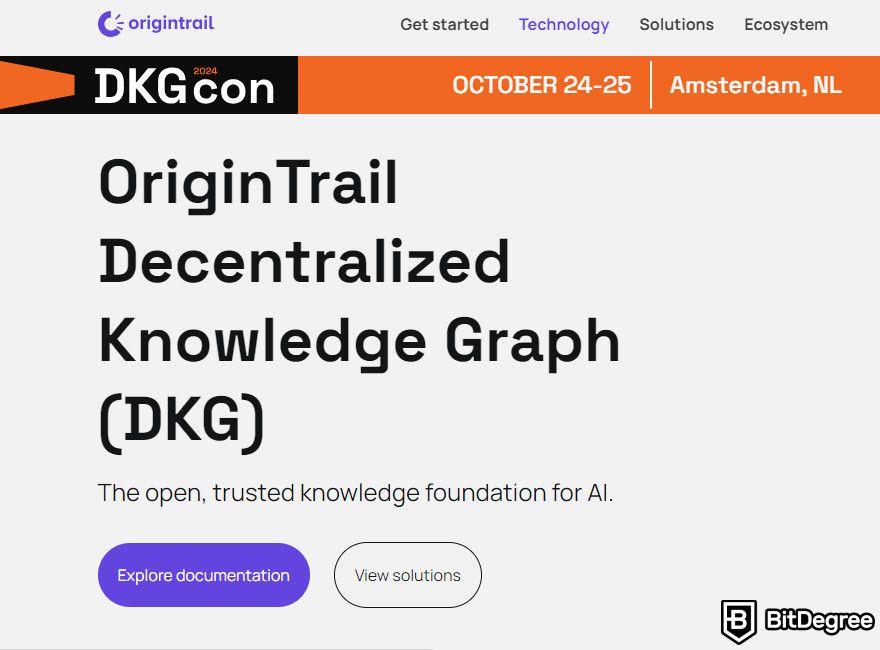
They've built a platform called a Decentralized Knowledge Graph (DKG) that's like a supercharged digital filing system that verifies and organizes information about real-world assets.
Imagine every product, piece of art, or property having a digital twin with all its details securely stored on the blockchain – that's what OriginTrail is working towards.
To power this system, they created the TRAC token, an ERC-20 token that fuels the OriginTrail network. This token is essential for verifying data, accessing information, and participating in the platform. By holding TRAC, users contribute to the network's growth and can potentially earn rewards.
Polymesh (POLYX)
Market Cap (as of October 2024): Around $211.46 million.
Where to Buy: POLYX is available on Binance, Kraken, and more.
Polymesh stands out as a dedicated blockchain platform built from the ground up for security tokens. Unlike general-purpose blockchains, it offers a tailored environment that addresses the unique needs of the securities industry.
![]()
By blending the security of a private network with the transparency elements of a public blockchain, Polymesh creates a unique space for tokenizing complex financial instruments.
At the heart of Polymesh is the POLYX token, which serves as the platform's fuel. Holding POLYX grants you special privileges like voting on platform decisions, getting discounts on transaction fees, and early access to new features.
One of Polymesh's standout features is its commitment to regulatory compliance. They offer tools to help projects follow securities laws, covering everything from knowing your customer (KYC) to making sure investors meet certain financial standards. This focus on compliance is critical for gaining trust in the security token market.
Polymesh also understands the importance of keeping sensitive information under wraps. They've designed the platform to protect investor data and transaction details while still maintaining transparency where needed. It's a delicate balance, but Polymesh seems to have cracked the code.
Benefits of Real-World Assets in Crypto
Real-world asset crypto projects offer a new way to invest in and manage assets. Let's see how they can benefit investors, asset owners, and the broader financial system.
For Investors
Individuals looking to diversify their portfolios should consider the benefits of tokenized assets. Here are how they can benefit individuals seeking to diversify their portfolios and gain exposure to unique asset classes:
- Increased Accessibility. Digitized assets break down barriers for individual investors. Traditionally, owning assets like real estate or fine art required substantial capital. However, tokenization allows these assets to be divided into smaller, fractional digital tokens, making them accessible to a broader range of investors[2].
- Diversification. By incorporating real-world asset crypto projects into their portfolios, investors can diversify beyond traditional asset classes, potentially reducing overall risk.
- Enhanced Liquidity. While some fractionalized real-world assets may experience lower liquidity compared to established financial markets, the potential for increased trading volume is promising. Breaking into secondary markets, similar to traditional stock exchanges like the New York Stock Exchange (NYSE), can significantly enhance liquidity over time.
- Potential for Higher Returns. Real-world assets in crypto may offer the potential for higher returns compared to traditional investments, especially in emerging asset classes. However, it's essential to conduct thorough research and consider the risks involved.
As you can see, real-world assets crypto present exciting possibilities for investors seeking diversification, enhanced liquidity, and the potential for higher returns. By understanding the benefits and risks, investors can make informed decisions about incorporating them into their portfolios.
For Asset Owners
Beyond investors, asset owners also stand to benefit significantly from crypto real-world assets. Let's examine how tokenization can unlock new opportunities and improve efficiency.
- Improved Liquidity. Selling a whole property or a piece of art can take forever. With tokenization, though, owners can split assets into smaller pieces and sell them off easily. This means faster access to cash and less hassle.
- Reduced Transaction Costs. Managing assets can be expensive, and yet, real-world assets in crypto can help reduce costs by automating tasks and streamlining processes with smart contracts.

- Access to New Capital. Tokenization can provide a new avenue for raising capital from asset securitization, which can be offered to a wider investor base.
- Enhanced Valuation. Real-world assets in crypto can provide a more accurate and up-to-date valuation of underlying assets through market-determined token prices.
As technology continues to evolve, you can anticipate a more efficient, inclusive, and innovative ecosystem. The potential benefits of digitized real-world assets extend far beyond individual investors, offering opportunities for economic growth and development.
For the Financial System
The impact of real-world crypto assets extends beyond individual investors and asset owners. These assets have the potential to revolutionize the financial system by enhancing efficiency, promoting financial inclusion, and driving innovation.
- Enhanced Efficiency. Real-world assets tokenized on blockchain platforms can significantly streamline asset management processes. Smart contracts automate tasks like payments, transfers, and record-keeping, reducing operational overhead and increasing efficiency.
- Increased Financial Inclusion. Tokenization opens up new investment opportunities for a wider range of people. By making assets more accessible and divisible, it allows individuals with varying financial capacities to participate in asset classes traditionally reserved for larger institutions.
- Innovation and Market Growth. The development of real-world assets in crypto can drive innovation in the financial industry, leading to new products, services, and investment strategies.
- Economic Growth. The increased liquidity and efficiency enabled by digital assets can contribute to overall economic growth and development.
In essence, crypto real-world assets have the potential to reshape the investment landscape by offering a new paradigm for asset ownership and trading.
As the technology matures and regulatory frameworks evolve, we can expect to see even more innovative applications emerge in the world of real-world assets crypto.
Well, there you have it, the main benefit of tokenized assets. Now that we've established that, let's move on to the real-world assets crypto list.
Challenges and Considerations
Having listed the top real-world assets crypto projects, it's clear that the industry is rapidly growing. While these projects showcase the potential of tokenized assets, there are still challenges and considerations to navigate.
Let's get to know some of the key issues facing the crypto real-world asset market.
Regulatory Uncertainty and Compliance
One of the biggest headaches for the real-world asset industry is figuring out all the rules and regulations. It's like trying to navigate a maze with constantly changing paths. Different countries have different rules about these things, so it’s hard for projects to follow the law everywhere.
A major challenge is figuring out what exactly a token is – is it a currency, a stock, or something completely different? This matters a lot because different rules apply to various financial products. Getting this wrong can have serious consequences for a project and its investors.
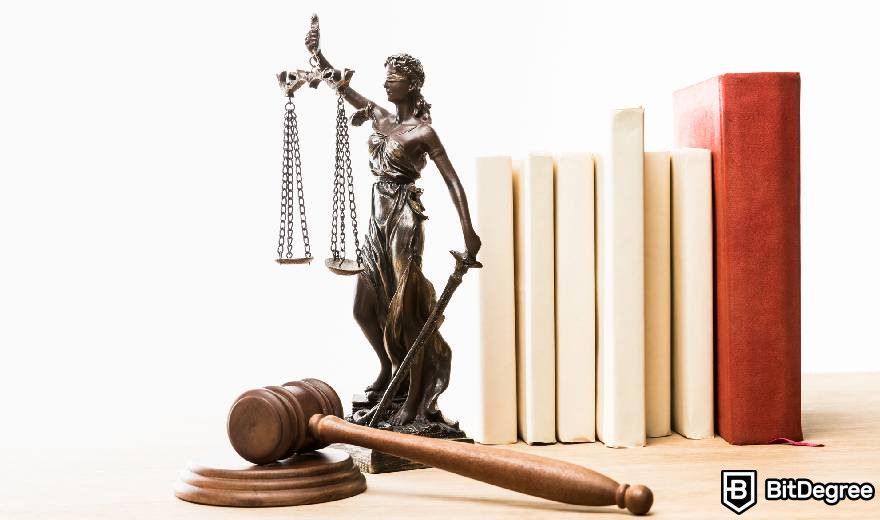
Another big challenge is making sure bad guys don't use blockchain to hide dirty money. This is where things like KYC and Anti-Money Laundering (AML) come in.
KYC means knowing who your customers are, which is pretty straightforward. However, blockchain anonymity can make it challenging to determine who's who. Meanwhile, AML is about stopping money laundering, and that's even harder on a blockchain, where money can jump around the globe in seconds.
Basically, the crypto real-world assets industry is caught between the need to innovate and to follow the rules. It's a balancing act that's keeping everyone on their toes.
Market Volatility and Liquidity
While tokenization can enhance liquidity by expanding the investor base, the broader cryptocurrency market's volatility can impact the price of real-world assets in crypto.
Just like traditional assets, the value of tokenized assets can fluctuate based on market sentiment, economic conditions, and how well the underlying asset is performing. This unpredictability can deter investors seeking stable returns.
Additionally, ensuring sufficient liquidity for all real-world assets crypto is a challenge. Actively trading markets with ample buyers and sellers is essential for price discovery and efficient trading.
While tokenization can attract new investors, it's crucial to maintain a balance between supply and demand to prevent excessive price swings.

- Secure and reliable
- Accepts fiat currencies
- Lots of trading options
- Reputable exchange
- Accepts fiat currencies
- Offers various trading options

- Huge trading variety
- Regulation-compliant around the globe
- Fair trading fees
- Beginner-friendly
- A wide array of features
- Vast number of different crypto coins & tokens

- Beginner-friendly
- Secure
- Decent trading and withdrawal fees
- Crypto.com Visa Card
- Automated tools & bots
- Ecosystem synergy with CRO
Proving Token Legitimacy
Blockchain offers a clear record of ownership, but it doesn't automatically guarantee the value or authenticity of the underlying asset.
For example, if you tokenize a piece of real estate, the blockchain can show who owns the token. Still, it doesn't automatically verify that the property actually exists or that the person selling the token is the rightful owner.

To truly trust a tokenized asset, you need more than just a digital record. There needs to be a solid connection between the digital token and the physical asset it represents.
Meaning, you need to take extra steps like legal paperwork and independent valuations to confirm the asset's legitimacy. It's like buying a house – just because you have a deed doesn't guarantee you own the property. You have to make sure the house actually exists and that you're the rightful owner.
The Potential Future of Real-World Crypto Assets
The future of real-world asset tokenization is bright and brimming with potential.
Experts say this market could skyrocket to a massive $10 trillion in the next few years. This growth is fueled by the growing acceptance of blockchain technology among traditional financial institutions (TradFi) and their interest in tokenizing assets like real estate, gold, and fine arts.
Tokenized real estate is a prime example of real-world assets crypto's potential. These digital representations of physical property could eventually rival traditional real estate investment trusts (REITs) due to their increased accessibility and potential for higher returns.

It's no surprise that major players in the financial world are taking notice. A survey by BNY Mellon found that 97% of institutional investors believe tokenization will revolutionize asset management.
Even consulting giants like Boston Consulting Group see a massive future for tokenized assets and predict a market worth up to $68 trillion by 2030[3].
The future of real-world assets is promising, but challenges remain. Ensuring interoperability between different blockchain platforms and developing robust regulatory frameworks will be crucial for the market's continued growth.
As these hurdles are addressed, we can expect a wider range of assets to be tokenized, leading to a more diverse and inclusive financial landscape.
Conclusion
So, we've explored the exciting world of real-world assets crypto. From understanding how these assets work to exploring some of the top projects in the space, it's clear that this is a rapidly evolving field.
Real-world assets are shaking things up in the financial world. They're giving regular folks a shot at owning a piece of something big, like real estate or art.
Sure, there are still some hurdles to jump over, like figuring out how to keep prices stable and making sure everyone can easily buy and sell these tokens.
However, exchanges like Binance, Kraken, and Bybit are leading the charge, making it easier to access and trade these assets. As blockchain technology keeps evolving, we will likely see even more mind-blowing possibilities in the RWAC space.
The content published on this website is not aimed to give any kind of financial, investment, trading, or any other form of advice. BitDegree.org does not endorse or suggest you to buy, sell or hold any kind of cryptocurrency. Before making financial investment decisions, do consult your financial advisor.
Scientific References
1. G. Wang, M. Nixon: ‘SoK: tokenization on blockchain’;
2. A. Gupta, J. Rathod, D. Patel, et al.: ‘Tokenization of Real Estate Using Blockchain Technology’;
3. R. Suresh, S. Kumar, D. Liu, et al.: 'Relevance of On-chain Asset Tokenization in 'Crypto Winter''.


